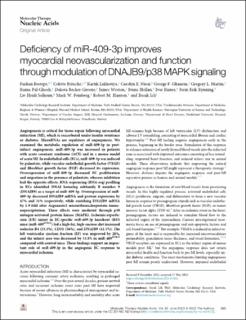| dc.contributor.author | Bestepe, Furkan | |
| dc.contributor.author | Fritsche, Colette | |
| dc.contributor.author | Lakhotiya, Kartik | |
| dc.contributor.author | Niosi, Carolyn E. | |
| dc.contributor.author | Ghanem, George F. | |
| dc.contributor.author | Martin, Gregory L. | |
| dc.contributor.author | Pal-Ghosh, Ruma | |
| dc.contributor.author | Becker-Greene, Dakota | |
| dc.contributor.author | Weston, James | |
| dc.contributor.author | Hollan, Ivana | |
| dc.contributor.author | Risnes, Ivar | |
| dc.contributor.author | Rynning, Stein Erik | |
| dc.contributor.author | Solheim, Liv Heidi | |
| dc.contributor.author | Feinberg, Mark W. | |
| dc.contributor.author | Blanton, Robert M. | |
| dc.contributor.author | Icli, Basak | |
| dc.date.accessioned | 2023-11-08T08:22:42Z | |
| dc.date.available | 2023-11-08T08:22:42Z | |
| dc.date.created | 2023-06-16T12:17:46Z | |
| dc.date.issued | 2023 | |
| dc.identifier.citation | Molecular Therapy - Nucleic Acids. 2023, 32 995-1009. | en_US |
| dc.identifier.issn | 2162-2531 | |
| dc.identifier.uri | https://hdl.handle.net/11250/3101261 | |
| dc.description.sponsorship | Angiogenesis is critical for tissue repair following myocardial infarction (MI), which is exacerbated under insulin resistance or diabetes. MicroRNAs are regulators of angiogenesis. We examined the metabolic regulation of miR-409-3p in post-infarct angiogenesis. miR-409-3p was increased in patients with acute coronary syndrome (ACS) and in a mouse model of acute MI. In endothelial cells (ECs), miR-409-3p was induced by palmitate, while vascular endothelial growth factor (VEGF) and fibroblast growth factor (FGF) decreased its expression. Overexpression of miR-409-3p decreased EC proliferation and migration in the presence of palmitate, whereas inhibition had the opposite effects. RNA sequencing (RNA-seq) profiling in ECs identified DNAJ homolog subfamily B member 9 (DNAJB9) as a target of miR-409-3p. Overexpression of miR-409-3p decreased DNAJB9 mRNA and protein expression by 47% and 31% respectively, while enriching DNAJB9 mRNA by 1.9-fold after Argonaute2 microribonucleoprotein immunoprecipitation. These effects were mediated through p38 mitogen-activated protein kinase (MAPK). Ischemia-reperfusion (I/R) injury in EC-specific miR-409-3p knockout (KO) mice (miR-409ECKO) fed a high-fat, high-sucrose diet increased isolectin B4 (53.3%), CD31 (56%), and DNAJB9 (41.5%). The left ventricular ejection fraction (EF) was improved by 28%, and the infarct area was decreased by 33.8% in miR-409ECKO compared with control mice. These findings support an important role of miR-409-3p in the angiogenic EC response to myocardial ischemia. | en_US |
| dc.language.iso | eng | en_US |
| dc.publisher | Elsevier | en_US |
| dc.rights | Attribution-NonCommercial-NoDerivatives 4.0 Internasjonal | * |
| dc.rights.uri | http://creativecommons.org/licenses/by-nc-nd/4.0/deed.no | * |
| dc.title | Deficiency of miR-409-3p improves myocardial neovascularization and function through modulation of DNAJB9/p38 MAPK signaling | en_US |
| dc.title.alternative | Deficiency of miR-409-3p improves myocardial neovascularization and function through modulation of DNAJB9/p38 MAPK signaling | en_US |
| dc.type | Peer reviewed | en_US |
| dc.type | Journal article | en_US |
| dc.description.version | publishedVersion | en_US |
| dc.source.pagenumber | 995-1009 | en_US |
| dc.source.volume | 32 | en_US |
| dc.source.journal | Molecular Therapy - Nucleic Acids | en_US |
| dc.identifier.doi | 10.1016/j.omtn.2023.05.021 | |
| dc.identifier.cristin | 2155248 | |
| cristin.ispublished | true | |
| cristin.fulltext | original | |
| cristin.qualitycode | 1 | |

